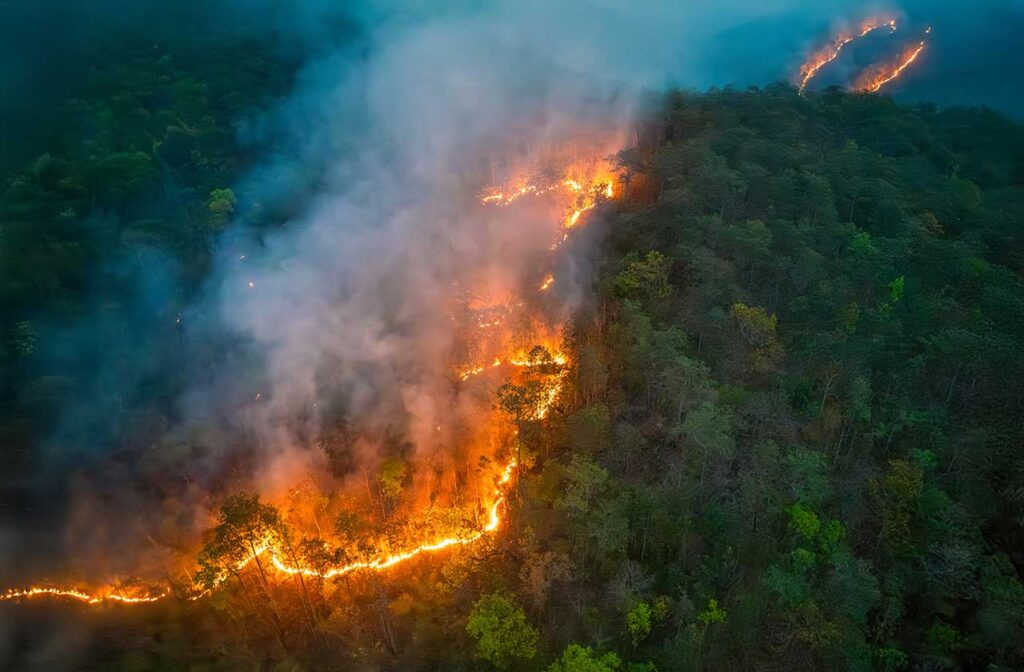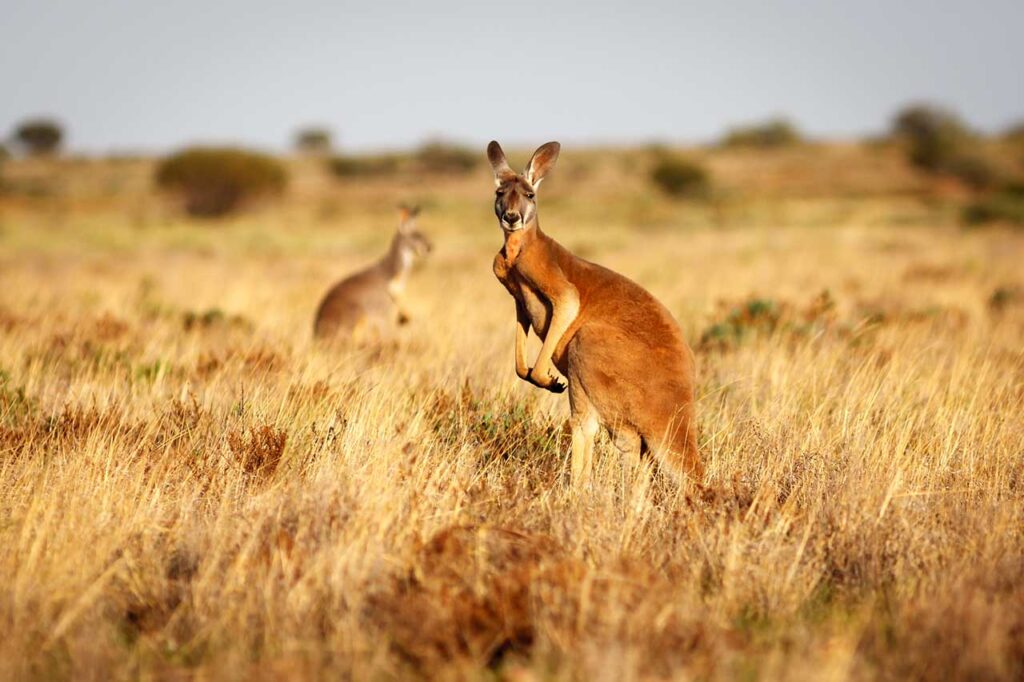Beyond Visual Line of Sight (BVLOS) drone operations continue to redefine what’s possible in Australia’s skies. From rapid bushfire response to expansive mine surveys, BVLOS unlocks missions that traditional line-of-sight flying simply can’t reach. A recent webinar, led by Jackie Dujmovic, CEO of Hover UAV, and featuring several other experts, discussed “everything you need to know to launch, scale and sustain BVLOS drone success” in the land down under.
Getting Started: The BVLOS Approval Journey
Embarking on the journey to secure approval for BVLOS drone operations in Australia is a meticulous process that requires strategic planning, technical precision and a clear understanding of both your mission and the regulatory landscape. Unlike standard drone flights, BVLOS missions are evaluated on a case-by-case, area-specific basis— there’s no “one size fits all” approval.
Step 1: Know Your Mission
“Knowing the RPA you want to use, the area you want to operate in, and the task you want to accomplish is very important to know at the onset,” advised Dylan Bishop, Senior Consultant at Hover UAV.
Step 2: Regulatory Foundations
BVLOS approvals in Australia require a detailed application, including a robust safety case and operational manual. To operate BVLOS in Australia, you must first have a Remotely Piloted Aircraft Operator’s Certificate (ReOC), a Remote Pilot Licence (RePL) with a BVLOS or Instrument Rating exam pass and BVLOS flight approval from CASA (the Civil Aviation Safety Authority). There are 2 options to become certified as a BVLOS operator. The first that if you intend to operate outside Controlled airspace, you will need to obtain your OCTA rating (outside Controlled Airspace) certification through the regulator or inside controlled airspace, your IREX instrument rating (BVLOS OCTA or Instrument Rating exam pass(, Expect the process to take between four and six months from submission to approval if you already have a ReOC; complex cases can take longer.
- Application Preparation: Compile your ConOps, safety case, manuals, maps, and risk assessments. Timeline: 1–2 months (varies by operator experience and complexity)
- Submission and Payment: Pay the assessment fee (typically around $2,880 for basic BVLOS) to enter the review queue. Timeline: 1–2 weeks.
- CASA Assessment: Expect feedback and possible requests for clarification or updates. Timeline: 4–6 months (from payment to decision).
- Flight Test: CASA inspector observes a live BVLOS mission, simulating emergencies and verifying procedures. Timeline: Scheduled near the end of the CASA assessment phase.
- Final Approval: Once passed, update your manuals and begin operations. Timeline: 1–2 weeks after successful flight test.
Step 3: Build a Robust Safety Case (SORA)
Australia uses the Joint Authorities for Rulemaking on Unmanned Systems (JARUS) Specific Operations Risk Assessment (SORA) methodology, currently at version 2.0. SORA is all about demonstrating you can manage the risks of your specific operation. Your application must include:
- Concept of Operations (ConOps): What you’ll do, where, with what equipment, and how you’ll manage risks
- Maps: showing flight geography, contingency volumes and ground risk buffers
- Risk assessments: for both air and ground hazards
- Operational manuals: updated to reflect BVLOS procedures
Step 4: Training and Flight Test
Operators must complete BVLOS OCTA (Outside Controlled Airspace) training and pass a CASA flight test. If operating within controlled airspace operators must have an IREX rating. The CASA flight assessment simulates real-world BVLOS operations, including emergency scenarios. “The inspector threw various fail safes at us—like GPS failures and simulated traffic conflicts—to make sure we handled those,” explained Andrew Tridgell, Systems Lead at ArduPilot and Adjunct A/Prof at Australian National University (ANU).

Designing Effective BVLOS Missions: From Concept to Compliance
Designing an effective BVLOS mission goes far beyond simply plotting a route on a map. In Australia, operators must take a systematic approach to mapping out the flight area, carefully defining not just where the drone will fly, but also accounting for emergency scenarios and the potential impact on people and property below.
Defining Your Flight Area and Risk Volumes
The mission design process starts with understanding three core volumes: .
- Flight Geography: The area you need to fly to complete your mission
- Contingency Volume: The space required for recovery from a breach of the Flight Geography (FG) (e.g. enough space to stop and back-track for MR, or turn for PL). This doesn’t provide enough time to enact an emergency response which should begin before you hit the edge of the FG anyway.
- Ground Risk Buffer: The area where the drone could land in a worst-case scenario – here meaning terminated at the edge of the CV both laterally and height.
“These volumes are informed by the drone’s key stats—airspeed, performance, and behavior in a safety scenario,” Bishop explained. By precisely calculating and visualizing these areas, operators can demonstrate to regulators that they have a robust plan for both mission success and public safety. This foundational mapping is the first step in building a safety case that meets Australia’s SORA requirements.
Assessing Air and Ground Risks
The SORA process assigns a risk class to both air and ground hazards. Operators must apply mitigations to bring risk to acceptable levels. Once you’ve mapped out your flight area and defined your contingency volumes, the next step is to take a hard look at the environment—both on the ground and in the air—where your drone will operate. This analysis is not just a regulatory checkbox; it’s about proactively identifying the hazards that could impact your mission and ensuring you have robust mitigations in place.
- On the ground: scrutinize the population density and infrastructure within the ground risk buffer; provide precise data on the maximum population density in your operational area and consider if events or time-based activities would lead a transient cluster of population density,
- In the air: complexity ramps up in proximity to controlled airspace, established flight paths and the likelihood of encountering crewed aircraft; mitigate additional risks through altitude separation, geo-fencing, automated termination, enhanced detect-and-avoid systems or enhanced situational awareness protocols.
To streamline and strengthen this risk assessment process, operators increasingly turn to specialized digital tools. SORA-Mate, for example, automates much of the data gathering and analysis required under the JARUS SORA framework, integrating global datasets on airspace, population and infrastructure to produce a ready-to-submit safety case.
Choosing the Right Tools: Hardware, Software, and Systems
Outfitting your BVLOS operation with the right hardware, software and systems constitutes a critical step that can make or break your mission’s success.
Selecting BVLOS-Ready Drones
Aircraft selection is critical. Selecting the right drone isn’t just about range or payload—it’s about reliability, ease of deployment, and how well your platform integrates with the rest of your operational ecosystem. From fixed-wing VTOLs like the Carbonix Volanti and Arace Griffin Pro to robust command-and-control software, today’s operators have a growing toolkit for long-range flights. With more options than ever, understanding which features truly matter—and how to tie them together for seamless, compliant operations—is essential.
Mission Planning and Ground Stations
Tridgell emphasized the need for custom ground station displays. “The sort of ground station display that most people use may not be suitable for BVLOS operations,” he said. “We’ve got a custom ground station display.” Advanced mission planning tools are also essential for terrain awareness and avoidance; automated warnings for traffic and avionics failures and integration of ADS-B and other situational awareness data.
Automating Safety and Fail-Safes
Automated traffic warnings, backup ground control stations and rigorous pre-flight simulation are vital. “As much as possible, automate these considerations. For example, have automated traffic warnings set up on your vehicle so if another aircraft comes within threshold distances, you automatically get a voice warning,” Tridgell advised.
Real-World BVLOS: Lessons from the Field
Experience is the ultimate teacher in the world of BVLOS drone operations, and nowhere is this more evident than in the lessons learned from real-world missions across Australia.
Fire-Spotting with ANU Scout
The ANU Scout fire-spotting initiative, developed by the Australian National University in partnership with Carbonix and the ACT Rural Fire Service, aims to tackle one of Australia’s most persistent threats: catastrophic bushfires sparked by lightning strikes. By leveraging BVLOS-capable drones equipped with advanced thermal cameras, the Scout project is pioneering a new approach to early ignition detection in remote, rugged terrain. The project’s operational area stretches across national parks and challenging landscapes, requiring the team to navigate complex airspace, variable weather and strict CASA regulatory requirements.
Tridgell, a key technical architect for the project, explained, these missions demand not only the latest in drone hardware but also meticulous flight planning, robust risk management and seamless integration with emergency services workflows. His pro tips include pre-planning alternative landing sites for emergencies; using simulation and hardware-in-the-loop testing before real flights; and integrating custom geo-fencing and altitude limits directly into the flight controller.
Mining Surveys at Whitehaven Coal
Whitehaven Coal’s adoption of BVLOS drone operations has been a turning point for survey efficiency, safety, and data quality across its open-cut mine sites. The drones’ high-resolution imagery supports a wide range of applications—from stockpile management and environmental monitoring to infrastructure assessment and dam inspections—while minimizing the need for ground vehicles and reducing environmental impact.
According to Jessica Irwin, Survey Technician at Whitehaven Coal, the shift to BVLOS has allowed teams to “cover the entire pit in about an hour, down from up to four hours previously.” Whitehaven’s surveyors can capture comprehensive aerial imagery and 3D models with fewer images—reducing the number of photos from up to 2,000 per survey under VLOS to just 200–300 with BVLOS and cutting data processing and delivery times by at least 24 hours.BVLOS has also unlocked safer access to hazardous or hard-to-reach areas, “without putting anybody at risk,” Irwin noted.
Sustaining BVLOS Operations: Training, Compliance, and Scaling
Sustaining BVLOS operations in Australia demands much more than simply achieving regulatory approval—it requires a culture of continuous improvement, robust internal training and the flexibility to scale as technology and operational needs evolve.
Internal Training and Crew Resource Management
Ongoing training is the backbone of operational safety and compliance. With BVLOS, the stakes are higher: pilots must be adept at not only flying the aircraft but also managing complex scenarios, responding to emergencies, and maintaining situational awareness far beyond what’s required for VLOS flights.
Tridgell explained that effective BVLOS missions also rely on a well-coordinated crew, with each team member—whether pilot in charge, secondary ground station operator, airband radio operator, or FPV feed monitor—understanding their role and responsibilities. “We learned how to delegate tasks and practice crew resource management,” he shared.

Flight Planning and Compliance
Meticulous flight planning is non-negotiable. Missions are often planned several days in advance to allow time for securing all necessary approvals, stakeholder engagement, and thorough risk assessments. Operators use geo-fencing and digital overlays to ensure drones remain within approved operational boundaries, while continuous monitoring of airband radio and real-time telemetry is essential for situational awareness throughout the mission. Post-flight, all data and flight records are reviewed and synced to maintain a transparent compliance trail, supporting both internal audits and future regulatory submissions.
Scaling Up: Drone-in-a-Box and Remote Operations
Scaling up means rethinking how risks are managed when pilots are removed from the field. For example, remote operations require solutions for remote airspace monitoring, ground risk management and rapid response to unexpected events. The integration of advanced technologies—such as automated detect-and-avoid systems, redundant communication links and real-time data analytics—becomes increasingly important. As drone-in-a-box systems and remote operations centers become more common, CASA may send multiple inspectors for new equipment or complex setups.
Continuous Improvement and Industry Advocacy
Finally, sustaining BVLOS operations is about fostering a culture of continuous improvement. This includes regularly updating training programs, staying current with CASA’s evolving regulatory framework and advocating for industry-wide advancements—such as streamlined approvals and broader area waivers—to support safe and efficient scaling.
What’s Next for BVLOS in Australia
Ultimately, the next phase for BVLOS will be defined by collaboration: between operators, regulators and technology providers. And regulatory evolution is underway.
CASA is expected to release updated guidance on SORA 2.5 and the transition process in 2025, aiming to clarify requirements and provide a smoother pathway for operators navigating the shift from SORA 2.0.
The agency is also actively engaging with stakeholders to develop tailored frameworks for regional and agricultural operations, recognizing the unique needs of these sectors and the impracticality of the current approval timelines for time-sensitive missions.
The rollout of the Flight Information Management System (FIMS) and broader Unmanned Traffic Management (UTM) capabilities will play a critical role in integrating drones safely into shared airspace. As these systems mature, expect to see new requirements for remote identification, real-time monitoring and automated compliance tools—further supporting the safe expansion of BVLOS across Australia’s diverse industries.
The future of BVLOS in Australia is poised at a pivotal moment, with industry and regulators both recognizing the need for smarter, more scalable frameworks to keep pace with rapid technological advances. With continued advocacy, regulatory innovation, and investment in advanced safety technologies, Australia seems well positioned to lead the way in safe, scalable and impactful BVLOS operations.
For more resources, training, and expert support, visit Hover UAV, ArduPilot, and CASA’s official guidance portals.
By: Dawn Zoldi

